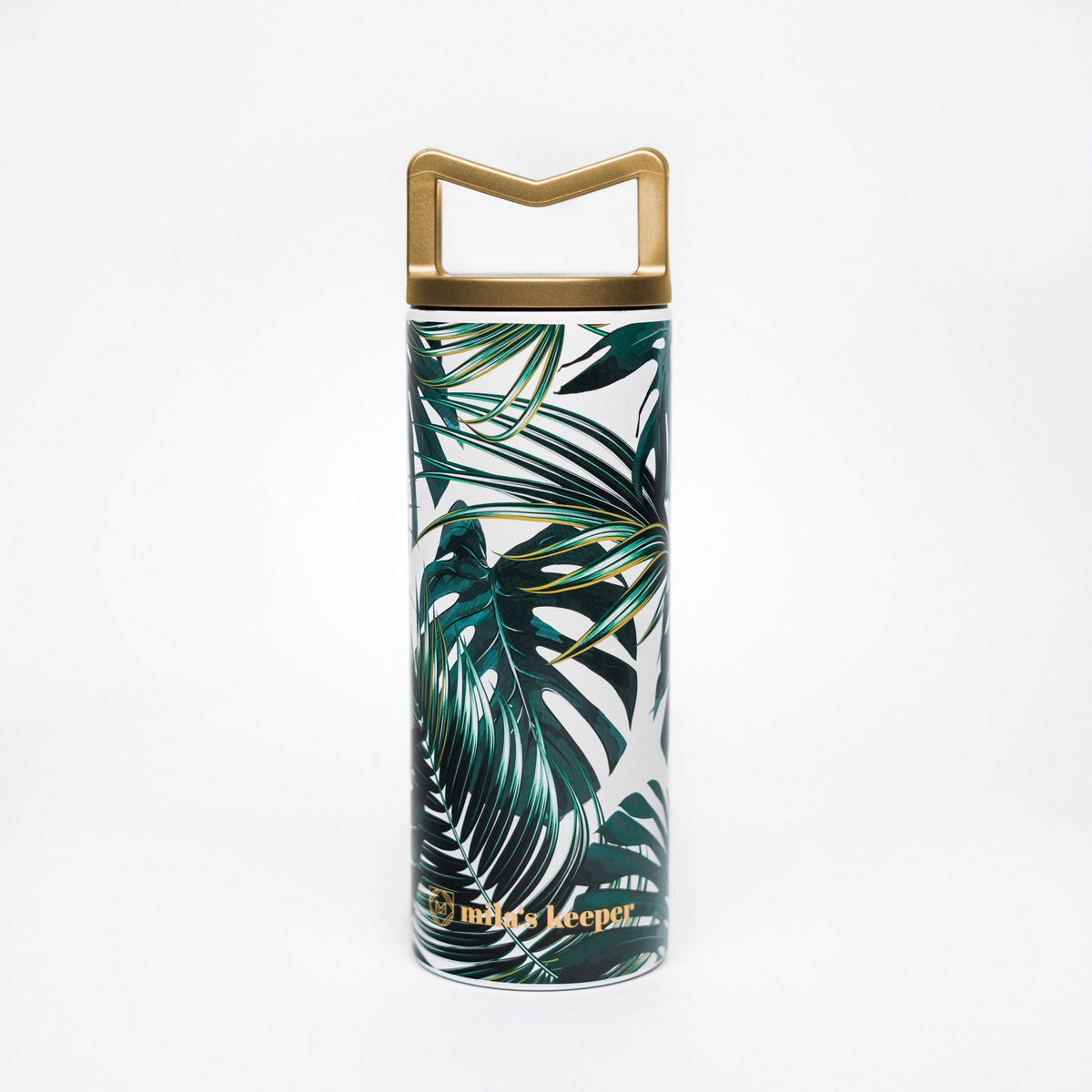For as vast as our differences can appear, every culture shares some common threads. One of those common threads is the shared experience of raising babies. The ways in which we feed the littlest members of our society have some commonalities, and some differences.
Today, we want to explore the act of breastfeeding in the very cradle of humankind…Africa.
Breastfeeding has been a cultural norm in African societies for thousands of years, dating back to ancient/prehistoric times. It is seen as an essential component of maternal and child care, providing both nutrition and emotional bonding between mother and child.
Many pregnant women look forward to breastfeeding with pride. Africans believe that breastfeeding facilitates a strong bond between a mother and her child. Some African cultures have a strong belief in the power of breast milk; that it can bless a child, or curse a child.
In some communities, it’s believed that the milk from the mother's breast has the power to transmit life and heal illnesses.
Beliefs like these help to strengthen the cultural significance of breastfeeding and reinforce the importance of mother-child bonding.
Breastfeeding in Africa is often viewed as a communal responsibility, with mothers receiving support from family members, especially grandmothers, in caring for the child.
Breastfeeding practices vary across African cultures, but there is a general emphasis on extended breastfeeding, with many children being breastfed for two to three years or more. As we know, there are many benefits of breastfeeding. It provides a range of health benefits to both the mother and the child, including increased immunity to disease, and a reduction in the risk of certain chronic conditions like obesity and type 2 diabetes.
However, different countries in Africa face certain challenges when it comes to exclusively breastfeeding. In Nigeria, which has one of the highest rates of childhood malnourishment, efforts are being made to encourage new mothers to exclusively breastfeed their babies for at least six months and to continue to include breast milk in their child’s diet for up to two years to prolong the benefits
While breastfeeding percentages are typically high in most African countries, exclusively breastfeeding for the first six months is still very low.
The World Health Organization (WHO) has a global goal of reaching a 50% rate of exclusively breastfeeding by 2025.
Below are a few of the obstacles Africa faces in reaching that goal, and the ways they’re being addressed.
5 Challenges faced in African communities to exclusively breastfeed

A push for formula
During the 1970s and 1980s, there was a trend among international organizations to provide infant formula to mothers in developing countries as a response to high levels of malnutrition and infant mortality. This led to infant formula being aggressively marketed in most African countries.
Formula companies have provided training and incentives to health workers to promote formula use, they provide free samples of formula to mothers in hospitals and clinics, which can create a false sense of dependence on the product and discourage breastfeeding.
The approach to push formula was later criticized for being inappropriate, as it failed to take into account the local context and the unique needs and circumstances of mothers and children.
In the 1990s the World Health Organization (WHO) recommended exclusive breastfeeding in an effort to protect children against diarrhea, upper respiratory infections, and other common infections.
Now, organizational work on breastfeeding in Africa includes supporting the implementation of breastfeeding-friendly health policies and practices, providing training and support to health workers and mothers, and advocating for increased investment in maternal and child health and nutrition.
Healthcare access
In some African countries, access to healthcare is limited, and women may not receive adequate support and information about breastfeeding. This can lead to difficulties with lactation, such as low milk supply, and may contribute to early weaning.
Throughout Africa, organizations are working to strengthen health systems to provide comprehensive and integrated care for mothers and children. It’s crucial that mothers have access to the information and support they need to initiate and sustain breastfeeding.
In Uganda, there have been a number of initiatives aimed at promoting and supporting breastfeeding, including public awareness campaigns, support groups for mothers, and the provision of lactation services in health facilities.
These efforts have helped to raise awareness of the benefits of breastfeeding and to provide support to mothers who choose to breastfeed their children.
HIV/AIDS
HIV/AIDS continues to be a significant public health issue in Africa, and it has a particularly significant impact on pregnant women and their infants. Pregnant women with HIV face unique challenges, including the risk of transmitting the virus to their unborn child, the risk of complications during pregnancy and childbirth, and the impact of the disease on their own health.
WHO and UNAIDS have, in the past, generally advised against breastfeeding for women living with HIV in order to minimize the risk of transmitting the virus to their babies through breast milk.
New research shows that the risk of transmission through breast milk is very low when the HIV-positive breastfeeding mother is being treated with Antiretroviral Therapy (ART). ART is the cornerstone of treatment for HIV, and it’s essential for preventing mother-to-child transmission of the virus.
However, access to ART is still a major challenge in many parts of Africa, and many women living with HIV do not have access to the care and treatment they need.
For the HIV-positive women who do have access to ART, it is now recommended that they exclusively breastfeed their babies for the first six months, and to continue to breastfeed for the next couple of years.
There is still some taboo around HIV/AIDS-positive women breastfeeding, and there is a push to get the information out that the benefits of EBF far outweigh the risks in the regions of Africa that continue to have high malnutrition rates among children.

Working mothers
Another obstacle to higher breastfeeding rates is the lack of support and space for working women to breastfeed. With about only nine percent of companies having a workplace breastfeeding policy, women in the workforce lack the necessary environment to supply breast milk for their babies.
Agricultural communities have lower breastfeeding rates because this line of work doesn’t have an environment that is accommodating to women who need to sit somewhere with an electric pump in privacy, to express breast milk. Nor would they be able to properly refrigerate their breast milk even if they had the opportunity to pump. This is actually one of the reasons we created our breast milk cooler; so that more women would have the opportunity to keep their breast milk at the proper temperature after pumping, wherever they are.
Myths and traditions
Myths about breastfeeding are often repeated; passed on from generation to generation. One common myth that you may have heard is that if you give a breastfeeding baby formula, they will prefer formula and won’t take the breast anymore. Or that breastfed babies are clingy. Or it’s too hard to wean a baby if you breastfeed for longer than a year. These myths are relatively mundane, and while unhelpful, they don’t seem harmful enough to dissuade a great many people from breastfeeding.
Breastfeeding itself is not a novel practice in African culture, but exclusively breastfeeding is still a relatively new concept and one that conflicts with traditional practices and beliefs. The beliefs, or myths, that are passed down from generation to generation have made it a challenge to convince new mothers of the benefits of exclusively breastfeeding for the first six months of life.
In some African cultures, there is a belief that colostrum (the first milk produced after birth) is not suitable for consumption, is dirty, and should be discarded instead of given to the baby.
In some sub-Saharan regions, mothers and babies are separated after birth and undergo separate cleansing rituals instead of skin-to-skin contact and immediate breastfeeding.
Some of the myths reportedly perpetuated in African communities can be risky. Like the notion that exclusively breastfeeding babies is dangerous- that to survive, babies need to be given water, herbal tea, or supplemental food from infancy. For instance, herbal and medicinal preparations are commonly used among indigenous African people based on the belief that they ward off evil spirits and promote infant survival.

Breastfeeding as an African immigrant
For many women in the western world, the act of breastfeeding in public is not always comfortable. In many cases, this is because it wasn’t something that we grew up seeing, and maybe even something we heard spoken about disparagingly.
When breastfeeding becomes marginalized in a culture, this once normal and often-seen practice becomes socially unacceptable, something to be hidden, not openly discussed, and even something to be ashamed of.
A study in Australia showed that African immigrants who were breastfeeding adapted to their host country’s attitude about publicly breastfeeding. The low visibility of breastfeeding in public made it seem as if it was a socially unaccepted practice, therefore these women refrained from publicly breastfeeding, even though that was contrary to practices in their home country.
Women in Africa are more likely to breastfeed for up to 12-24 months after birth compared to women on other continents. However, upon migrating to western countries, the length of breastfeeding shortens and is more aligned with their host country, or shorter.
African American breastfeeding
The history of breastfeeding among African American women is complex and shaped by a variety of social, cultural, and historical factors.
In the antebellum period, enslaved African American women were often forced to nurse the children of their slave masters, and their infants were often taken away from them and raised by others. This practice was a way for slave masters to control and exploit enslaved women, and it separated mothers from their children, disrupting the natural bonding process.
In the 20th century, as formula became more widely available and marketed as a more modern and convenient alternative to breastfeeding, the rates of breastfeeding among African American women declined. The aggressive marketing of formula to African American communities, combined with the lack of access to accurate information and resources about breastfeeding, contributed to the decline in breastfeeding rates.
Currently, breastfeeding rates among African American women in the United States are lower compared to other racial and ethnic groups. According to the Centers for Disease Control and Prevention (CDC), in 2020, about 74.1% of African American women started breastfeeding, compared to about 83.2% of white women. Additionally, African American women are more likely to stop breastfeeding earlier than women in other racial and ethnic groups.
African American women are also less likely to have family members or friends who have breastfed, which can make it more challenging to receive support and information about breastfeeding.

Final thoughts
All around the world, there are generations of women who have been misinformed or misguided about the best practices to nourish our babies.
Women today face many obstacles in their pursuit to get back to exclusively breastfeeding. Some of these obstacles are cultural or societal barriers that are continually being challenged and are being broken down by a growing movement.
The task of spreading breastfeeding awareness and of sharing the benefits of exclusive breastfeeding is a global one.
Here at Mila's Keeper, we will continue to encourage an environment that values and supports breastfeeding women, wherever they are in the world.
Keep Reading: 7 Reasons Why We Celebrate Black Breastfeeding Week
--
A female-designed and female-run company, Mila's Keeper is on a mission to empower women to thrive during their breastfeeding journey by offering reusable, eco-friendly breast milk storage solutions for their day-to-day needs. Get the latest tips and info on Mila's Keeper products by following us on Facebook, Twitter, Instagram, Pinterest, and LinkedIn.























